Nitrate Contamination Spreading in California Communities’ Water
Wells that serve more than two million Californians are contaminated with nitrates at levels that surpass public health standards, California Watch reports. In small towns and rural settings, schools and families often don’t have access to groundwater filtration systems. Tap water spiked with high nitrate levels can lead to illness in infants and some studies have found connections to certain cancers in lab animals.
By Julia Scott
California Watch, Special to Circle of Blue
The water supply of more than two million Californians has been exposed to harmful levels of nitrates over the past 15 years – a time marked by lax regulatory efforts to contain the colorless and odorless contaminant, a California Watch investigation has found.
Nitrates are now the most common groundwater contaminant in California and across the country. A byproduct of nitrogen-based farm fertilizer, animal manure, wastewater treatment plants and leaky septic tanks, nitrates leach into the ground and can be expensive to extract.
The problem affects both rural Californians and wealthier big-city water systems. State law requires public water systems to remove nitrates. Many rural communities, however, don’t have access to the type of treatment systems available in metropolitan areas.
Nitrates have been linked to “blue baby syndrome,” which cuts off an infant’s oxygen supply. Some studies have found connections to certain cancers in lab animals.
The State Water Resources Control Board acknowledges that nitrates are a problem affecting vast regions of California. And the situation is worsening, especially in the Central Valley, Central Coast, and the Los Angeles and Imperial Valley regions. High nitrate levels have already impacted public water system wells in many areas, and the contaminants continue to migrate toward groundwater supplies that could ultimately impact the water supply for millions of additional Californians.
Statewide, the number of wells that exceeded the health limit for nitrates jumped from nine in 1980 to 648 in 2007. Scientists anticipate a growing wave of nitrate problems in some parts of the state if remedial steps aren’t taken.
And yet the state’s patchwork regulatory efforts remain riddled with gaps that have allowed nitrate contamination to spread virtually unchecked. Consider:
- Nothing is being done to regulate the use of the leading source of nitrate pollution in many regions of the state – nitrogen fertilizer. A lettuce farmer can apply as much fertilizer as he wants, within feet of the nearest water supply well, without having to worry how much of it might contaminate the groundwater with nitrates. Officials aren’t even equipped to determine the sources of contamination, meaning no one is held accountable.
- Sixty-five percent of domestic wells at Central Valley dairies test over the public health limit for nitrates, putting local residents at risk of potential exposure. Yet, according to records obtained from the State Water Resources Control Board, none of the dairies were fined for a nitrate problem identified by the state.
- When polluters are found responsible for nitrate contamination, the state rarely does anything to correct it. California has issued 248 enforcement actions against 44 polluters for nitrate contamination in the past six years. But only once has the state ordered a polluter to clean up contaminated groundwater.
In one of life’s ultimate ironies, families in poorer, rural communities typically pay more for tainted water than ratepayers hooked up to clean water systems.
Residents in the tiny town of Seville in eastern Tulare County, for instance, pay a flat monthly fee of $60 for nitrate-laden water they have been warned by local health officials not to drink. By comparison, the average metered bill is just $26.50 a month for San Francisco residents, who consume water from the pristine Hetch Hetchy water system.
“The people who are polluting the water, they don’t pay for that cleanup – the ratepayer does,” said Debbie Davis, a legislative analyst with the Oakland-based Environmental Justice Coalition for Water, a statewide network of grassroots groups that advocates for clean, safe water. “If California is going to meet the water challenges of the future, we have to figure out how to deal with nitrates.”
State officials, meanwhile, say that efforts to regulate and clean up nitrates have taken a backseat because the state has too many other environmental dangers to worry about. California finds itself grappling with a host of difficult water issues – ranging from the logistics of delivery and supply to basic safety and health concerns. Nitrate contamination is just one challenge facing regulators.
Darrin Polhemus, deputy director of the State Water Resources Control Board’s division of water quality, said his agency has chosen to spend more time and resources dealing with chemicals such as perchlorate and dry cleaning solvents, which cause more acute health effects when leached into groundwater.
“On the scale of things we deal with, while nitrates is certainly a concern and we’re managing for it, I don’t rank it high up there as something that makes me stay awake at night,” he said.
It’s unclear how often nitrate exposure has led to serious health consequences, because the dots aren’t always connected. For instance, more than 2,000 cases of acute “blue baby syndrome” have been tied to excessive nitrate consumption around the world since the mid-1950s, but scientists say many cases go undiagnosed. Bottle-fed infants whose formula was prepared using water are at greatest risk if the water exceeds public health limits for nitrates. Pregnant women are also at risk.
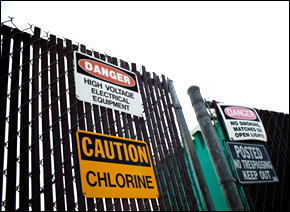
Many of the state’s fastest-growing regions overlie vast stores of nitrate-polluted groundwater. In the Eastern San Joaquin Valley, one of every three domestic wells has nitrate levels that exceed public health limits.
One of those wells is located on property owned by Camelia and Manuel Lopez in East Orosi, a small Central Valley town in Tulare County.
Camelia Lopez uses the water from her well to wash dishes, but not to drink or cook with because it is contaminated.
The Lopez family volunteered to have their family’s private well tested by the state last winter. The water contained nearly three times the federal health limit for nitrates. Follow-up testing of the family’s tap water by California Watch confirmed these results.
“You would never imagine in this country, that someone would have this problem,” said Camelia Lopez, who emigrated from Mexico as a young woman and moved to the countryside from the Bay Area.
Now the family buys bottled water for drinking and cooking at a cost of $60 a month – a real hardship since Manuel Lopez, a contractor, is unemployed.
Their three boys, age 6, 16 and 18, take the bottles to school as a precaution. A local high school has had nitrate problems for years. Camelia Lopez has taught them how to brush their teeth with bottled water and keep their mouths closed when they’re in the shower. Putting filters on all the taps in the house would cost at least $750.
The U.S. Environmental Protection Agency has estimated that as many as 52 percent of community water wells and 57 percent of domestic water wells in the United States are contaminated by nitrates. And 15 percent of contaminated wells in agricultural and urban areas have been found to exceed levels considered safe, according to the U.S. Geological Survey.
Much of the nitrates are only deep enough to affect private wells, which are shallower than their public counterparts. But the contaminant is starting to sink further into aquifers, deep enough to affect towns and cities, according to Karen Burow, a Sacramento-based scientist with the USGS.
“In the absence of some sort of mitigation, it’s likely that the water that’s at the domestic wells now is going to move downward and eventually reach the public supply wells,” Burow said. “So the question is, how long is it going to take until that really high-concentration water gets deeper in the system?”
Don’t drink the water
In parts of the state where serious nitrate problems have already taken root, communities have a limited menu of options available to cope with the contamination.
Large municipalities can afford to pay millions of dollars to remove contaminants like nitrates before they reach the tap. But these kinds of solutions are beyond the scope of many small communities, which are often home to the poorest and most disenfranchised residents in California.
Many communities rely on at least one well that contains dangerous levels of nitrates, forcing residents to use water they’ve been warned not to drink, say clean water advocates.
-Susana De Anda
The Community Water Center, based in Visalia, has helped dozens of residents, schools and communities across the Central Valley deal with nitrate problems.
Co-founder Susana De Anda says many communities pay twice for water each month: once for contaminated well water, once for bottled water.
Some communities have used state money to drill a test well, only to find nitrate problems there, too. And they can’t trace the nitrates back to their sources, so they can’t hold anyone accountable.
“The community has to figure out how to fix the problems when they didn’t pollute the water,” De Anda said. “It is not OK for communities to have to subsidize the cost of pollution through their health and their pocketbooks.”
Schools struggle with tainted water
On the other side of Tulare County from East Orosi, nitrate problems have been one long, expensive headache for Norm Brown, principal of Citrus South Tule Elementary School in Porterville. Several years ago, Brown applied for a state grant to dig a $100,000 well on school property to alleviate the school’s chronic nitrate problem, only to learn that the school’s entire local groundwater basin was loaded with nitrates.
“I was really going to make a difference on that,” Brown recalled. “But if they’re digging a well they’re not going to find clean water. It’s a waste of money.”
Sasha KhokhaSchools across the Central Valley have discovered their drinking water is contaminated by nitrate, affecting more than 3,000.
The school, which has 53 students, is one of 12 across the state now coping with nitrate contamination in their well water, affecting a total of about 3,000 students, according to public health records.
Testing by California Watch showed the school’s well water contained twice the public health limit for nitrates. A second set of tests analyzed the DNA fingerprint of the nitrates under the school and traced the contaminant back to its likely sources, including local citrus farms and natural sources in the Sierra foothills. The DNA test, known as a nitrogen isotope tracer test, indicates the general type of source the nitrates came from but can’t isolate exactly who would be responsible.
Bottled water is the only affordable remedy now but only barely. The school pays more than $2,000 each year to stock its water coolers and distribute plastic cups. Brown is also required to test the well water every month, which cost $2,500 in 2009, a hardship for a school that has just three teachers for six grade levels and was forced to tap its small reserve fund this year just to avoid laying off one of those instructors. Brown sends the test results to the Tulare County Department of Environmental Health.
Boiling water isn’t an option. It can actually make matters worse, scientists say, because it concentrates the water without eliminating the nitrates, making the dose of contaminants even more potent.
Even though no one has ever suspected the school of being the source of nitrates, last year, Citrus South Tule Elementary School had to pay $750 in fines for water quality. Brown calls it adding insult to injury.
“They get their money, they’re happy. I will pay a bill and buy the water. But don’t make me test the well,” he said. “I don’t care if you dig to China. There’s going to be nitrates.”
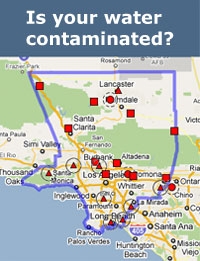
Enforcement doesn’t keep pace with spreading nitrates
Nitrogen fertilizers are an essential component of California agriculture, but they are also the leading source of nitrates in many agricultural areas, scientists say. In 2008, farmers applied 855,699 tons of nitrogen-based fertilizer to 6.7 million acres of irrigated farmland.
Dairies contribute an additional 240,000 tons of nitrogen from cow manure used to grow forage crops for the cows. Although crops absorb some of the nitrogen, up to half of it reaches the water table, scientists say.
In soils with enough oxygen to support it, nitrogen compounds convert to nitrates. Some of these eventually sink deep enough to affect drinking water.
Officials say nitrates are so common and mobile that they are difficult to track once they get into the groundwater, making the contaminant hard to monitor. And it can be just as hard to pinpoint the exact source of nitrates. Regulators can trace a gasoline tank leak to its source, or rocket fuel leaching from a factory. It’s not as simple with nitrates.
The regulatory challenges are even more vexing because so much of the nitrates seeping into the groundwater began their migration decades ago. It’s nearly impossible to know if contamination identified in 2010 came from a modern-day farm or from the same farm owned by a different family in 1970.
“It is much more difficult to go out and identify a single cause of a nitrate problem in the area, and it can be also very difficult to identify responsible parties and figure out what corrective action needs to be taken,” said Ken Landau, assistant executive officer of the Central Valley Regional Water Quality Control Board.
But clean water advocates say the State Water Resources Control Board could be doing more to protect ordinary Californians with stronger regulations, tougher enforcement and more monitoring to better understand what’s happening underground.
“Unfortunately, the (state) water board sort of throws up their hands and says, ‘If we can’t find the source how can we enforce?” said Davis, of the Environmental Justice Coalition for Water.
Even if the state board has reason to believe that a dairy farm or a food processor is leaching nitrates next to a residential area, it rarely requires farmers to test the nearest homeowner’s well to see if the contaminants have spread.
Sasha KhokhaChino water regulators passed strict rules limiting the number of cows and the amount of manure that dairymen can apply.
-Debbie Davis
Farmers and companies are urged not to degrade groundwater but are mostly left to employ voluntary strategies to comply. Fruit and vegetable farmers are completely exempt from enforcement oversight when it comes to groundwater, according to a review of agricultural policies across the state.
State water board staff members say they’re doing the best they can with limited resources. The Central Valley Regional Board, for instance, has six staff members to handle enforcement and compliance issues for hundreds of sewage treatment plants, food processors and other facilities that discharge waste, records show.
Critics charge that when it comes to regulating the industrial and municipal causes of nitrate leaching – farmers, dairies, food processors and sewage plants among them – economic considerations take precedence over public health.
Richard McHenry, a 20-year veteran of the state water board, says that when he worked for the regulatory authority, he felt pressured to write permits that did not place undue economic burden on certain operations. McHenry retired in 2008 after a final stint with a special investigations unit in the Office of Enforcement.
He says some companies have benefited from a clause in the Porter-Cologne Water Quality Control Act, enacted in 1969 to limit the spread of contaminants, which allows authorities to waive waste discharge requirements if it is in the “best interest” of Californians.
“The regional boards just make off-the-cuff remarks that a dairy employs people and produces milk, and therefore it’s in their best interests to pollute,” McHenry said. “What kind of analysis is that? You’re not looking at the whole big picture. It’s not only about jobs.”
Landau of the regional board said he knows of no regulatory agency that approaches its job in the manner McHenry described.
“This absolutely does not reflect the view of the boards,” he said. “Might a single board employee ever have said or thought something like this? We’re not privy to employees’ private opinions, but that statement certainly does not reflect the boards’ opinion. The boards’ view is that current regulation is vigorous and appropriate.”
Pollution yields few consequences
While the state water board and its regional entities have begun treating nitrates as a significant issue, regulations vary greatly by industry and region.
Where regulations do exist, former inspectors say a toothless enforcement system enables polluters to pay small fines for nitrate problems – if they are fined at all – rather than bring their operations into compliance.
Consider the case of Monterey Mushrooms Inc., the country’s largest marketer of fresh mushrooms. Its wells have exceeded nitrate limits 17 times, according to records reviewed by California Watch.
In 2006, the Central Coast Regional Water Quality Control Board cited Monterey Mushrooms for four of those violations. “Nitrate out of control!” one staff member scrawled on a lab report obtained by California Watch.
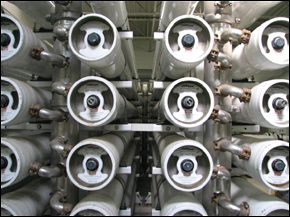
Yet the facility has never been fined or required to limit the amount of nitrate-contaminated water it sprays onto adjacent fields. This nutrient-rich wastewater is left over from the process of spawning, growing, and processing the mushrooms.
Monterey Mushrooms is hardly alone. In the past six years, state regulators issued 248 enforcement actions against 44 polluters for problems specific to nitrates in groundwater, records show. Most received routine violation notices. Even repeat violators are rarely fined.
Polhemus, of the State Water Resources Control Board’s division of water quality, says his agency has put greater emphasis on regulation than enforcement when it comes to nitrate polluters.
“We certainly don’t approach it from the same standpoint we do a chemical contamination, where we’re trying to find who released it, make them clean it up and penalize them for that,” he said. “Nitrates are so much everywhere that you’d spend too much time trying to track them down and the levels are such that it wouldn’t make sense to go after it that way. We think it’s much more important to try to get ahead of the curve through our different programs.”
The impact on towns and communities is steep. Several drinking water wells in Royal Oaks, a community neighboring Monterey Mushrooms, have already been shut down due to nitrates. Since 1983, residents have been asking the Central Coast Water Board to limit the amount of undiluted wastewater it allows Monterey Mushrooms to apply. Environmental studies conducted by the company show the Royal Oaks facility has applied far more nitrogen than the land can actually absorb – 36 times more.
The regional water board has said it is “concerned” about the potential for nitrate problems. But the agency has been unable to pinpoint the cause of the contamination.
Wayne Bautista, general manager of Monterey Mushrooms, says the high nitrate readings come from a well that’s closer to other fields on a ridge above the mushroom plant, and are not attributable to his plant’s operations. He also said the company has “significantly” reduced the amount of wastewater it applies to land, due in part to five newly lined wastewater ponds that help the plant reuse water in its composting process.
Monterey Mushrooms is located in the Salinas Valley – the heart of Monterey County’s $3.8 billion dollar agricultural industry. The region ranked first in the state for the most severe nitrate contamination back in 1995, according to a report prepared by the Central Coast Regional Water Quality Control Board. The water board has not updated its numbers since then.
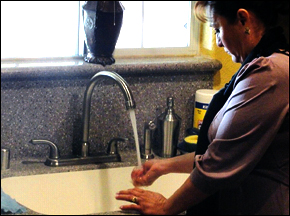
Yet the regional board does not require all growers to conduct groundwater monitoring. They are required to fill out a checklist of water quality management techniques they may be using on their farm, but they won’t face consequences for operating without them.
Farmers in both the Central Coast and the Central Valley may soon face new regulations that could require them to limit the amount of fertilizer they apply to crops. Farmers in areas known for heavy nitrate contamination would have to deal with more restrictions.
Fresno County farmer Parry Klassen says farmers shouldn’t be blamed for legacy nitrate problems that may have migrated in groundwater from elsewhere.
“Cities can’t say the farmers did it, the farmers can’t say the cities did it. I don’t think it should be set in someone’s lap. We need to figure out what the problems are and solve them where we can,” said Klassen, who is president of the East San Joaquin Water Quality Coalition.
Although nitrates are considered a pollutant under the Porter-Cologne Act, they have never been regulated that way, according to Davis, of the Environmental Justice Coalition for Water.
Back in East Orosi, Camelia Lopez feels helpless about her family’s nitrates problem, which testing has traced to animal manure, possibly from nearby cattle ranches, or a leaky septic system.
The reasons Lopez moved to the San Joaquin Valley – a simpler, rural life among the vineyards and the orange trees, the cows and chickens – may be harming her home and her community.
She knows nitrates are a big problem that will require a Sacramento-sized solution. But today she’s starting small – going door-to-door, talking to other mothers about getting their wells tested. She’d like to tell lawmakers what it’s like to be unable to drink water from her own tap. She’s even been practicing her testimony.
“Please care a little bit about this community,” she says. “Just like I’m worried about this, there are other mothers with a lot of kids who are worried about this issue, too. If it were you and your kids in this community, what would you think? What would you do?”
This story was produced in collaboration with KQED Central Valley Bureau Chief Sasha Khokha and Christopher Beaver of CB Films. It was edited by Mark Katches. It was copy edited by William Cooley. For the whole story, plus interactive tools, film clips, a photo slideshow and links to a three-part series on nitrates produced by KQED Radio, visit California Watch. Read more of California Watch’s work on Circle of Blue.
Circle of Blue provides relevant, reliable, and actionable on-the-ground information about the world’s resource crises.

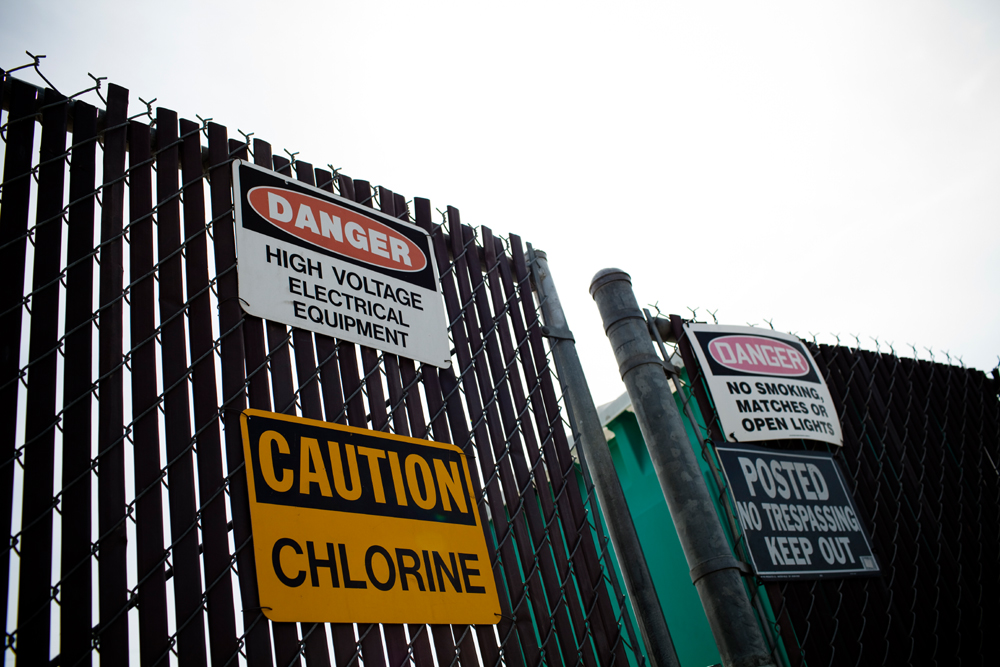
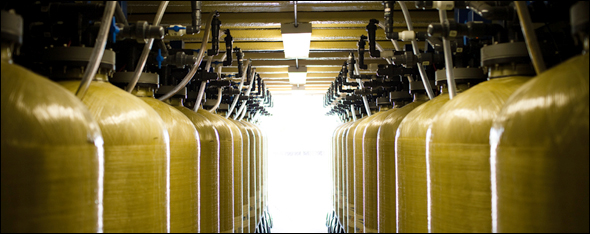
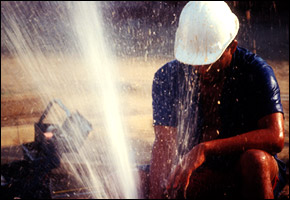








All biological life consist mostly out of four elements (carbon, hydrogen, oxygen and nitrogen), which by themselves are as old as the universe and only part of such life for a few weeks. Biological life therefore is a continuous recycling of these elements and in order to understand what is happening in the biosphere it is essential to understand the lifecycles of these elements. When one deals with human impact on the biosphere, it is essential to evaluate how these cycles are impacted by such behavior.
Focusing on one specific impact, in this case nitrates, again diverts the attention of the public and gives them a reason to point the finger of blame and in this case again at farmers.
Nitrates are in synthetic fertilizer used to grow crops and their excessive use is causing it to get into groundwater, but it also becomes organic matter and when consumed ends up in the urine of animals. As urea it is either directly used as a fertilizer to grow new organic matter or results first as ammonia which later is oxidized into nitrates and again in all these forms used as fertilizer.
When dissolved in water in a molecular form, it will travel wherever the water will go even in rain, as green rain.
The nitrogen life cycles (unlike the carbon, hydrogen and oxygen life cycles) are complex and the main reason they are mostly ignored. A prime example is that nitrogenous (urine and protein) waste in sewage from cities is still not required to be treated, while it besides exerting a direct oxygen demand (just like fecal waste) also is a fertilizer for algae and causes eutrophication, resulting in dead zones. If required to be treated, which is economically possible, probably none of the 300 ton of fertilizer entering daily in the Gulf of Mexico would be eliminated.
The reason that nitrogenous waste in sewage is ignored is caused by a faulty applied water pollution test and while EPA of the record in 1987 admitted that this test and regulations should be corrected, EPA also claimed that this was not possible as it would require a re-education and re-tooling of an entire industry. (www.petermaier.net)
Sadly nobody is willing to hold the EPA accountable
Julia Scott, California Watch, Circle of Blue
I just read your article dated 5/20/10 regarding contamination of drinking water from nitrates and other chemicals in Porterville and other towns in the San Joaquin Valley.
ECOLOBLUE is the solution to your problems…a Miami based company, manufacturer of atmospheric water generators. These generators extract water from the atmosphere, run the water through a 12 stage filtration system including charcoal, reverse osmosis, and UV lights, producing 99.9% pure drinking water, without having to use a source of water. EcoloBlue offers a solution to provide sustainable healthy water independence. Units can produce from 8 to 1500 gals/day of pure potable drinking water. Check them out on their web page…If there is any interest, email me or call me at 904-287-5249 so we can discuss further. Let’s not let people get sick or die from an unecessary situation
Thanks,
Pete Podes
Hello my name is Siriwan Beaumont from Pure Aqua Thailand,
Our company is distributing the same and similar air-to-water machines as EcoloBlue and DewPointe sell on the US market.
I would like to point out that these machines do not have a 12 stage filtration system, however some of the filters are of nano-density to ensure any pollutants that could be in the air are removed, and the water is clean and safe to drink.